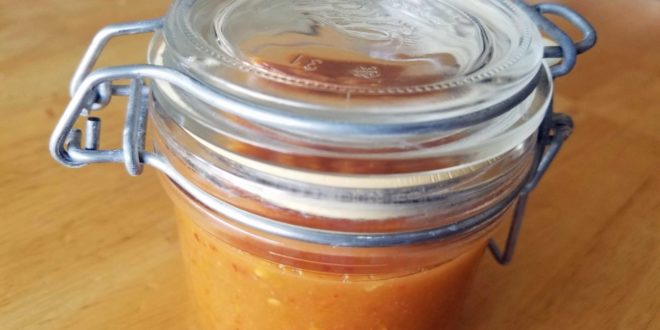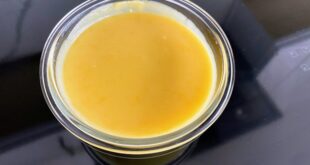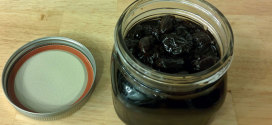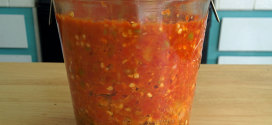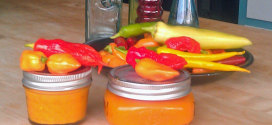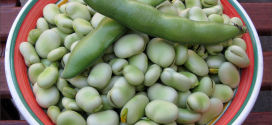I wanted more hot peppers in my Sunnyvale garden this year and I got them: Yellow habanero peppers; Red Savina peppers; thai peppers; and ghost peppers. Now I am trying a fermented hot sauce.
If you have ever had Tabasco or Sriracha, then you have had fermented hot sauce. Fermenting is not difficult and it is safe.
Lacto-fermentation is the process that produces traditional dill pickles, kimchi, and real sauerkraut. This requires nothing more than salt, vegetables, and water — no canning, no fancy equipment.
The lacto-fermentation process works because the bacteria that could be harmful to us can’t tolerate much salt, while healthy bacteria can.
The good guys on the salt-tolerant team are called Lactobacillus. Lactobacillus bacteria convert sugars naturally present in fruit or vegetables into lactic acid. Lactic acid is a natural preservative that helps fight bad bacteria and preserves not only the flavor and texture of food but also its nutrients.
Traditional lacto-fermentation involves submerging vegetables in a brine solution — salt and water. There are also methods of fermenting without added salt. The salt-brine method involves two stages:
In stage one of lacto-fermentation, vegetables are submerged in a brine that is salty enough to kill off harmful bacteria. The Lactobacillus good guys survive this stage and begin stage two.
In stage two of lacto-fermentation, the Lactobacillus organisms begin converting lactose and other sugars present in the food into lactic acid. This creates an acidic environment that safely preserves the vegetables – and gives lacto-fermented foods their distinctive tangy flavor.
In my version, to give the fermentation a head start, I am using a fermentation starter. This is just the juice from a raw fermented product. It can be juice from raw fermented sauerkraut, kimchi, traditional pickles, whey from yogurt. Avoid products which list vinegar.
Ingredients:
Chile peppers (3 ounces/about 8 to 12 chiles)
6-8 garlic cloves
1 tsp salt
1/4 cup water (or starter juice)
sugar (optional). The sugar gives added food for the bacteria and adds a sweet note.
Directions:
- Sanitize a glass jar
- Chop/puree all the ingredients in a mini-blender
- Pour in jar and put on lid
- Store in dark cupboard for a week
- Open jar and stir
- Repeat for several weeks
- Store in refrigerator or pressure seal for longer non-refrigerated storage
